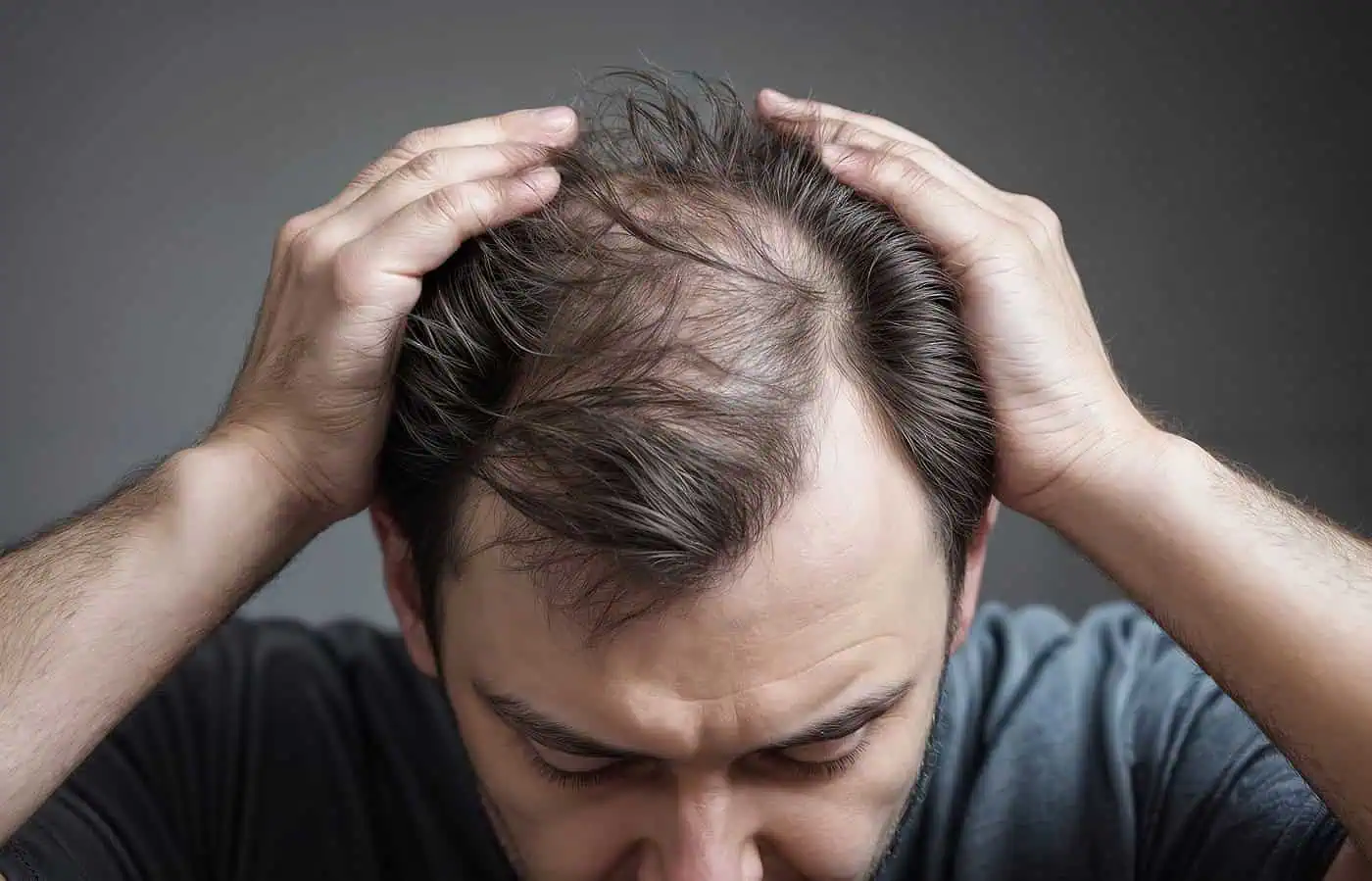Balding in New York, NY

Balding in New York, NY
Balding, or hair loss, is when individuals experience thinning or hair loss, often leading to partial or complete baldness. This condition can affect both men and women, although it is more common in men. Balding typically begins with a receding hairline or thinning at the crown and can progress over time, impacting a person’s appearance and self-confidence. Treatment options for balding vary widely and include hair transplant surgery, hair plugs, scalp reduction, over-the-counter medications such as Rogaine or Nizoral, external laser combs, and hair-stimulating treatments. Each of these treatments offers different approaches to restoring hair or slowing further loss, depending on the severity and pattern of balding.
Causes and Variations of Balding
Genetic factors primarily cause baldness, often called male or female pattern baldness. Hormonal changes, particularly the hormone dihydrotestosterone (DHT), play a significant role in shrinking hair follicles, which leads to hair loss. Other factors contributing to balding include stress, poor diet, certain medical conditions, and medications. Variations of the condition include alopecia areata, an autoimmune disorder that results in patchy hair loss, and telogen effluvium, a temporary form of hair loss often triggered by stress or trauma.
What Are The Different Procedures for Treating Balding?
Hair Transplant Surgery
Hair transplant surgery involves taking hair follicles from a donor area, usually the back of the scalp, and transplanting them to the balding areas. This treatment is often performed in multiple sessions and can result in a natural-looking hairline. The surgery requires careful planning and precision, making it one of the most effective options for hair restoration.
Hair Plugs
Hair plugs are an older and more common method of hair restoration in which small sections of scalp containing hair follicles are transplanted to balding areas. Although more advanced methods have replaced mainly this technique, it is still used in some cases. The results can vary from one individual to the next, and the procedure may require several sessions to achieve the desired aesthetic outcome.
Scalp Reduction
Scalp reduction involves surgically removing the bald areas of the scalp and stretching the hair-bearing skin to cover the removed sections. This procedure is often combined with other hair restoration techniques and is best suited for individuals with significant hair loss in specific areas.
Over-the-Counter Medications
Medications like Rogaine (minoxidil) and Nizoral (ketoconazole) are topical treatments applied directly to the scalp. Some of these medications may be able to prevent hair loss or stimulate hair growth in some cases. They are most effective when used in the early stages of balding and require consistent application to maintain results.
External Laser Comb
The external laser comb is a noninvasive treatment using low-level laser therapy (LLLT) to stimulate hair follicles and promote growth. It is easy to use at home and can be an effective option for those looking to enhance hair density and reduce hair loss.
Hair-Stimulating Treatments
Hair-stimulating treatments involve various methods, such as platelet-rich plasma (PRP) therapy, to encourage hair growth. In this procedure, concentrated plasma (rich in growth factors) is injected into the scalp to nourish hair follicles and stimulate the growth of new hair.
What Are the Results of Treating Balding?
Treating balding can lead to significant improvements in hair density, overall appearance, and self-esteem. The results of hair restoration treatments vary depending on the method used, but many individuals experience a fuller, more natural-looking head of hair. Most treatments require ongoing maintenance or follow-up sessions to sustain results. To explore the best treatment options for balding and restoring your confidence, book an appointment at Park Plaza Dermatology in New York, NY.
Benefits of Treating Balding
- Improved self-confidence and self-esteem
- Enhanced appearance and youthful look
- Increased hair density and coverage
- Natural-looking hairline restoration
- Permanent solution for hair loss
- Minimally invasive treatment options
- Reduced anxiety about hair loss
- Customizable treatment plans
- Long-term hair restoration
- Better styling options for hair
Frequently Asked Questions
Balding is primarily caused by genetic factors, with hormones such as DHT playing a significant role. Other causes include stress, medical conditions, medications, and poor nutrition.
Hair transplant surgery is highly effective for treating balding, especially in individuals with healthy donor areas. It provides a natural-looking result that can last a lifetime with proper care.
Over-the-counter medications like Rogaine can effectively slow hair loss and stimulate new growth, particularly when used consistently in the early stages of balding.
Scalp reduction surgery involves some risks, including scarring, infection, and changes in scalp sensation. It is essential to consult with a qualified surgeon to determine if this is the right option for you.
To stimulate hair growth, the external laser comb should be used according to the manufacturer’s instructions, typically several times a week.
While PRP therapy can significantly stimulate hair growth and slow balding, it may not completely stop the condition. For the best results, it is often used in combination with other treatments.
